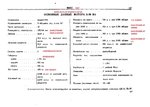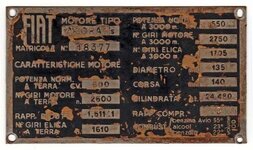Yes, everybody will say: nope, 600 HP. However, the data plate from 1939 says otherwise:

So I've took the CSI approach, and tried to take a look at Italian manuals to comfirm or refute this. So far I've bagged only the manual for the Fiat CR.32 fighter, where it says that 'international power' was 600 CV @ 2750 rpm, while 2890 rpm was allowed with 'pieno gas', or, roughly, 'full throttle'. Unfortunately, the power on that rpm is not stated.
(for example, the 'international power' of the Merlin III was stated at 900 HP @ 2600 rpm at 12250 ft, vs. 'maximum power' of 1030 HP @3000 rpm at 16250 ft, obviously on 87 oct)

I'd appreciate feedback on this

So I've took the CSI approach, and tried to take a look at Italian manuals to comfirm or refute this. So far I've bagged only the manual for the Fiat CR.32 fighter, where it says that 'international power' was 600 CV @ 2750 rpm, while 2890 rpm was allowed with 'pieno gas', or, roughly, 'full throttle'. Unfortunately, the power on that rpm is not stated.
(for example, the 'international power' of the Merlin III was stated at 900 HP @ 2600 rpm at 12250 ft, vs. 'maximum power' of 1030 HP @3000 rpm at 16250 ft, obviously on 87 oct)

I'd appreciate feedback on this

